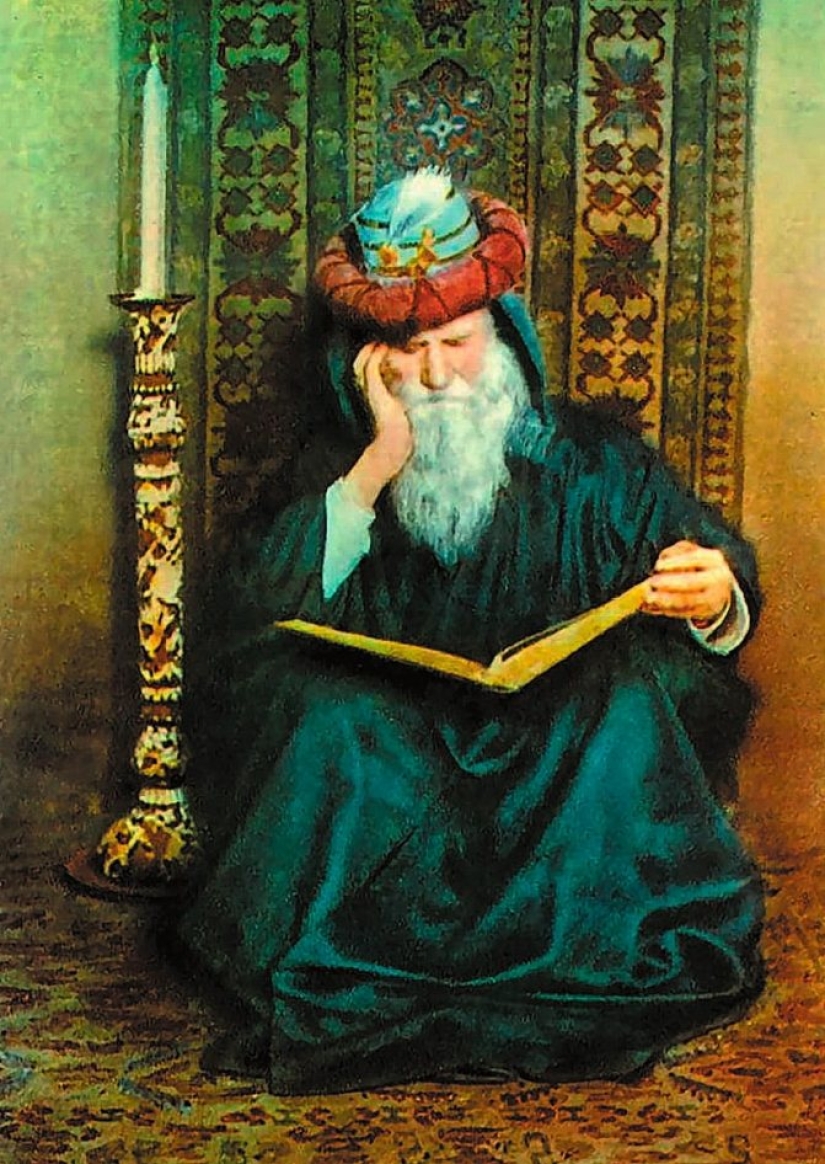Who was the Persian poet Omar Khayyam and what is his rubai really about
Categories: Culture
By Pictolic https://pictolic.com/article/who-was-the-persian-poet-omar-khayyam-and-what-is-his-rubai-really-about.htmlNowadays Omar Khayyam is without exaggeration the most famous Oriental poet and philosopher in the West. On the web, you can find so many of his rubai poems and wise sayings that another would have enough for two lifetimes. In fact, Khayyam himself created no more than a third of all the works attributed to him. And the meaning of those that the poet himself wrote is interpreted incorrectly today.

Despite the huge popularity, Khayyam's work and even biography have not been studied enough. We consider him the greatest poet of the East, but at home he is known as a mathematician, astronomer and philosopher. Omar Khayyam himself considered himself primarily a scientist and never presented himself as a poet.
As for the famous rubai, they are, first of all, a phenomenon of Western culture. Khayyam himself worked in the 11th-12th centuries, but in Europe learned about it only in the middle of the 19th century. The first edition of the poet's works was the collection "Rubayat" translated by Edward Fitzgerald. The book was published in 1859.

The poetry of an exotic Persian author "entered" the reader and from that moment the triumphant success of Khayyam began. The poet's legacy is increasing every year. At first, this was due to new translations, and later — due to attribution of other people's works to the author. Today, about 5,000 rubai roam the world. Scientists believe that no more than a third of them belong to the pen of the Persian poet. Someone is even less optimistic and claims that Omar Khayyam created 121 rubai, no more.
The confusion is facilitated by the fact that Khayyam was not published during his lifetime. The first collection of poems was published only 50 years after his death. For a long time, quatrains were spoken orally and their number was constantly increasing. This was due to the fact that some aspiring poets were afraid of criticism and passed off their pearls as Khayyam's creations. There are even examples of collective creativity among the rubai attributed to the Persian poet.

Readers of rubai Khayyam get the impression that he was an unrestrained hedonist. That the meaning of his life was to get the maximum amount of pleasure and joy. His quatrains glorify love, women and wine, but experts warn against hasty conclusions. Khayyam's rubai can be called multi-layered, filled with hidden philosophical meaning. The author himself spoke about it:
Among the connoisseurs of Omar Khayyam's work, there are many who consider him a Sufi mystic. They think he has encoded a deep meaning in metaphors. Allegories are characteristic of Sufi poets. In the case of Khayyam, wine could mean a mystical comprehension of the truth, intoxication — an ecstatic state of an adept close to the truth.

Under the image of a beauty, one can understand the soul of a seeker of truth, under a jug — the mind of a person. If we think this way, then the poet's entire work is not at all about the joys of life, but about approaching the divine and the bliss associated with it. The assumption, though quite bold, but it has the right to exist.
In another interpretation, intoxication is a symbol of human liberation. The call to seek the truth in wine is the author's rebellion against established dogmas, protest against religious canons, and even a polemic with the Creator. There is another hypothesis about the origin of rubai Khayyam, quite mundane. There is an opinion that the scientist wrote the quatrains to please the sultan, so that he would not interfere with his studies.

But, anyway, most of the connoisseurs of immortal rubai are sure that there is something more in these verses than a call to enjoy earthly joys. So far, the mystery has not been solved and it can be safely included in the list of the most complex ciphers in history.
Recent articles

Most of us think that the color of the eggshell does not play any role and it is possible not to pay attention. But it's not and ...

The more we rely on technology, the more potential power hackers gain over us. It doesn't matter if their goal is to help or cause ...

Creating a good portrait is one of the most difficult tasks for any photographer. In order to make a really natural and memorable ...